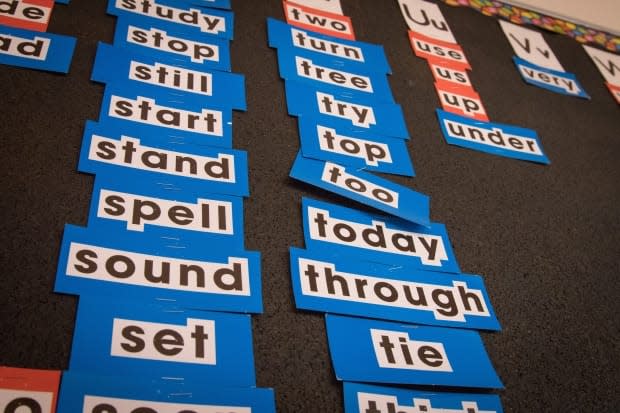Child development measurement shows modest progress for kids entering primary school

The most recent measurement of children's development as they enter school shows improvement from two years ago.
But, overall, there is little change since the Nova Scotia government first started using a mechanism to track results.
Since 2013, the province has used a tool called the early development instrument, or EDI, which measures the development of five year olds as they enter primary.
The EDI, developed by McMaster University, evaluates kids based on five categories: physical health and well-being, social competence, emotional maturity, language and cognitive development, and communication skills and general knowledge.
Any student who posts a score below the 10th-percentile cutoff of the province's established baseline is considered vulnerable in a given category.
Two years ago, the province registered the highest number of children deemed vulnerable since the EDI started being used, with 29 per cent showing vulnerability in at least one of the five indicators.

This year's version has shown improvement, with that number dropping to 25.5 per cent. While it's better than last time, it's the same as the numbers registered for the 2013 and 2015 school years.
Education Minister Derek Mombourquette said officials in his department keep a close watch on the EDI results and how they're trending.
When the Liberals introduced the pre-primary program in 2017, the free daycare-style program for four year olds was billed as trying to level the playing field for children as they entered the school system.
"We know that early signs right now are very positive," said Mombourquette.
"The reports we're receiving [from] the regional centres is that students are enjoying the experience and it's helping them prepare much better for the transition into grade primary."
Pre-primary assessment needs more time
What's unique about this report, said Mombourquette, is it takes into consideration elements outside the classroom, which in turn can help set policy for other government departments along with his own.
"I'm looking at this data looking at the investments not only that we're making on the education side, but some of the investments we've made to combat poverty within communities that I think are going to provide more positive results as we move forward."
A growing chorus of voices, including doctors and service providers, is calling for a targeted plan to help address Nova Scotia's child poverty rate, which has remained stubbornly high.
Jessie-Lee McIsaac, an assistant professor at Mount Saint Vincent University and a research chair in early childhood, said she and her team are still trying to understand the critical differences in the most recent EDI results and those from two years ago.
McIsaac said it's important to also look at other sources of information to determine what's affecting early childhood development. Pre-primary may improve things, but McIsaac said its impact will be felt "years down the road."
"So if we look at the 2020 data, that would have been the 2019 cohort of pre-primary and that still wasn't the entire province that had access to the program," she said.
"We're still pretty early into the implementation of the program, I feel, to see an impact. I think maybe [the next report] we'll start to see it."

Given the similarities in three out of four years, McIsaac said more needs to be known about what's contributing to child development.
"What we're trying to dig into is are there community-level differences that are meaningful that can help us to understand areas that seem to be champions in providing support for early childhood or are there areas needing greater support for supporting families with young children."
There are indeed variations in communities when it comes to the EDI results. Although the Education Department did not provide a breakdown by regional centres for education, it did provide some data broken down by county.
They show the difference of students on track in all five assessment categories the EDI measures. Those results range from a low of 56.9 per cent in Queens County to a high of 80 per cent in Victoria County.
Understanding those differences, and what contributes to them, is key to making progress, said McIsaac.
Mombourquette said staff in his department would work with other government departments and the regional centres for education to determine what needs to be done to address shortcoming identified in the EDI results.
"I think with the investments that we're making, we're going to see more positive results."
MORE TOP STORIES

 Yahoo Movies
Yahoo Movies 